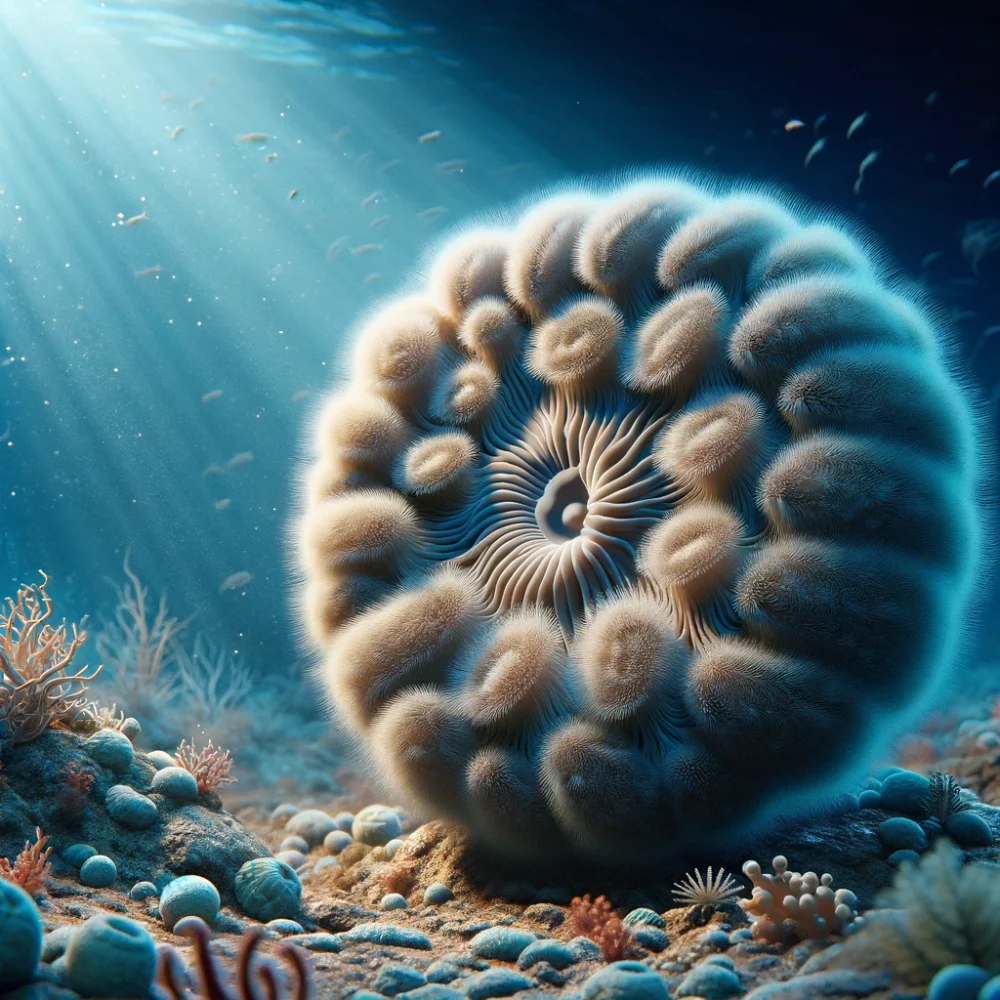Surprising discovery of the University of Queensland, Australia. THE Cycloseris CyclolitesA small and fascinating types of mushroomoral can move along the seabed in search of light. This capacity reveals a considerable adjustment to a continuously evolving ocean environment
“Coral: get up and walk”
If you think of corals, the image that emerges in you is anchored to their habitat in the vicinity of underwater barriers. However, this traditional vision is refuted by Cycloseris CyclolitesA small member of the Funggid family. Equipped with a discoid structure and a function “Asociality”This body is not anchored to the substrate because it happens for many of its fellow people, but slowly goes for the search for light, indispensable for the survival of the Zooxantelle (single -celled photosynthetic micro -organisms) symbiotic that hosts.
A study published in Plos One in 2025 and led by Brett Lewis Dell ‘University of QueenslandIn Australia, this behavior has documented through time-lapse videos (creative video recording and assembly technology with which you can manipulate the frequency of the frames). During the experiment, one of the samples covered 43.73 millimeters in 24 hours.
The mechanism behind this movement is complex and fascinating. The process starts with the swelling of the external tissues, which eliminate the central part of the body from the seabed. Subsequently, a tissue contraction transfers strength to a kind of “foot” that is under the discoid structure. This cycle of expansion, contraction and twist generates a pulsating movement, similar to that of the jellyfish, which means that cycloseris cyclolites gradually continue to a light source.
Light as a guide: a matter of survival
The movement of the cycloseris cyclolites is not coincidental, but closely oriented on the search for optimum light for photosynthesis. Like many polyps, this species lives in symbiosis with dinoflagellati, small photosynthetic organisms that produce energy from sunlight and transfer to coral. But what color does she prefer?
Chasing Blue: The Luminous Charm of Moving Corals
The experiments showed that 86.7% of these organisms choose decisive blue glow compared to white light, slowly but deliberately move to this specific light source. Only a minority, 13.3%, seems to orientate differently.
This preference is not coincidental, but rooted in the natural habitat of these polyps. At a greater depth, where they live, the wavelengths of blue light (between 420 and 510 nanometers) penetrate more effectively than the white, which is almost completely absorbed in the surface layers of the sea. Blue is therefore not only a color, but an extraordinary example of evolutionary adjustment, which again underlines complexity and intelligence that are hidden in marine ecosystems.
Ecological implications and climate change
The ability of Cycloseris Cyclolites To move it, it can represent an important survival strategy in a world in fast climate transformation. The surface waters, more and more hot as a result of climate change, cause devastating phenomena such as Bleekekorals, a condition in which the dinoflagellati (microscopic algae represent one of the most important groups of phytoplankton) the tissues of the octopus often dead.
Il Our coralmigrate to deeper and fresh areas, can be the most serious effects of appearance global. As Lewis noted: “The movement strategies of these corals can help us predict how some marine species will adapt to environmental variations, which means that their ability to survive in extreme conditions “.
An unexpected neurological refinement
The coordinated movement of the Cycloseris Cyclolites It reveals a surprising neurological complexity for an organism that until recently was considered without refined behavior. The comparison with jellyfish, Bedistante family members of Koraal, suggests that there is an evolutionary connection with which both organisms can move in the same way, using rhythmic pulsations to navigate through the marine environment.
The importance of research: a step forward in conservation
The study about “Coral who runs” It is not only a scientific curiosity, but offers crucial information for the preservation of marine ecosystems. The ability to adjust this coral can inspire strategies to protect other more vulnerable species against the effects of climate change. Moreover, understanding the mechanisms that regulate movement and interaction with light can better lead to new solutions to reduce the effects on coral reefs.
As Lewis explained: “The knowledge acquired by these observations can be applied to understand how marine species will respond to future challenges, such as water heating and the reduction of light by‘acidification of the oceans ».

